
Buprestidae is a family of beetles known as jewel beetles or metallic wood-boring beetles because of their glossy iridescent colors. Larvae of this family are known as flatheaded borers. The family is among the largest of the beetles, with some 15,500 species known in 775 genera. In addition, almost 100 fossil species have been described.
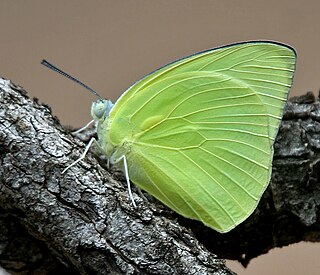
Catopsilia pomona, the common emigrant or lemon emigrant, is a medium-sized pierid butterfly found in Asia, Cambodia and parts of Australia. The species gets its name from its habit of migration. Some early authors considered them as two distinct species Catopsilia crocale and Catopsilia pomona.

Curetis bulis, the bright sunbeam, is a species of butterfly belonging to the lycaenid family. It is found in Asia.

Chalcophora japonica, or ubatamamushi in Japanese, also known as the flat-headed wood-borer, is a metallic, bullet-shaped, woodboring beetle of the Buprestidae family. It is endemic to Japan.

Zopherus is a genus of beetles comprising 19 species. They live in the Americas and are adapted to wood-boring. Some species are used as living brooches.

Temognatha alternata is endemic to Queensland, Australia. Little is known of this spectacular beetle which has never been formally described, as the name is taken from that given by Lumholtz without any description.
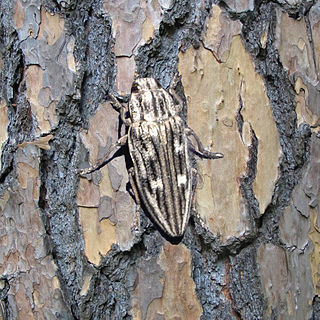
Chalcophora is a genus of beetles in the family Buprestidae, containing the following living species:

Orthomegas cinnamomeus is a species of beetle in the genus Orthomegas of the family Cerambycidae. It was described by Carl Linnaeus in his landmark 1758 10th edition of Systema Naturae. It is found in Hispaniola, Trinidad, Colombia, Venezuela, the Guianas, Brazil, Ecuador, Peru and Bolivia.

Archodontes melanopus is a root-boring species of beetle in the family Cerambycidae, the only species in the genus Archodontes. It is endemic to Central America and the south-eastern United States, and bores the roots of oaks and other hardwoods.
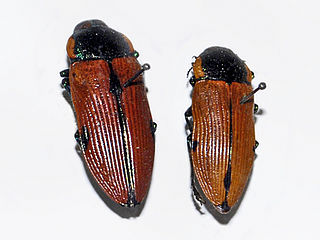
Temognatha variabilis, commonly known as the variable jewel beetle, is a beetle of the family Buprestidae.

Neoclytus longipes is a species of beetle in the family Cerambycidae. It was described by Dru Drury in 1773.
Eburia quadrimaculata is a species of beetle in the family Cerambycidae.

Elaphidion irroratum is a species of beetle in the family Cerambycidae. It was described by Carl Linnaeus in his 1767 12th edition of Systema Naturae.

Steirastoma pustulata is a species of beetle in the family Cerambycidae. It was described by Dru Drury in 1773 from Jamaica.
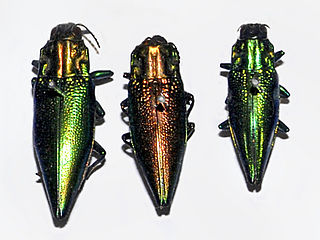
Cyphogastra foveicollis is a Jewel Beetle of the Buprestidae family.

Prosopocera bipunctata is a species of flat-faced longhorn beetles in the subfamily Lamiinae. It was first described by Dru Drury in 1773, from Sierra Leone.
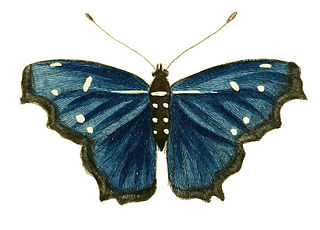
Myscelia orsis is a species of nymphalid butterflies native to Brazil. It was first described by Dru Drury in 1782.
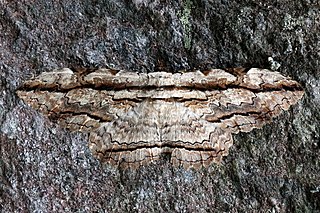
Thysania zenobia, the owl moth, is a species of moth in the family Erebidae. The species was first described by Pieter Cramer in 1776, and is native to North and South America and the Caribbean.

Lyssa patroclus is a species of moth in the family Uraniidae. The species was described by Carl Linnaeus in his 1758 10th edition of Systema Naturae from the Moluccas.
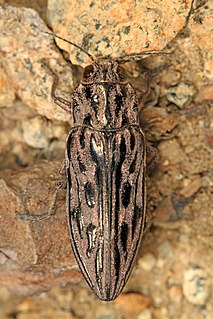
Chalcophora angulicollis, known generally as the western sculptured pine borer or sculptured pine borer, is a species of metallic wood-boring beetle in the family Buprestidae. They are found in dry parts of the world such as the western parts of North America. They have a dark brown textured shell with a shimmery gradient.



















